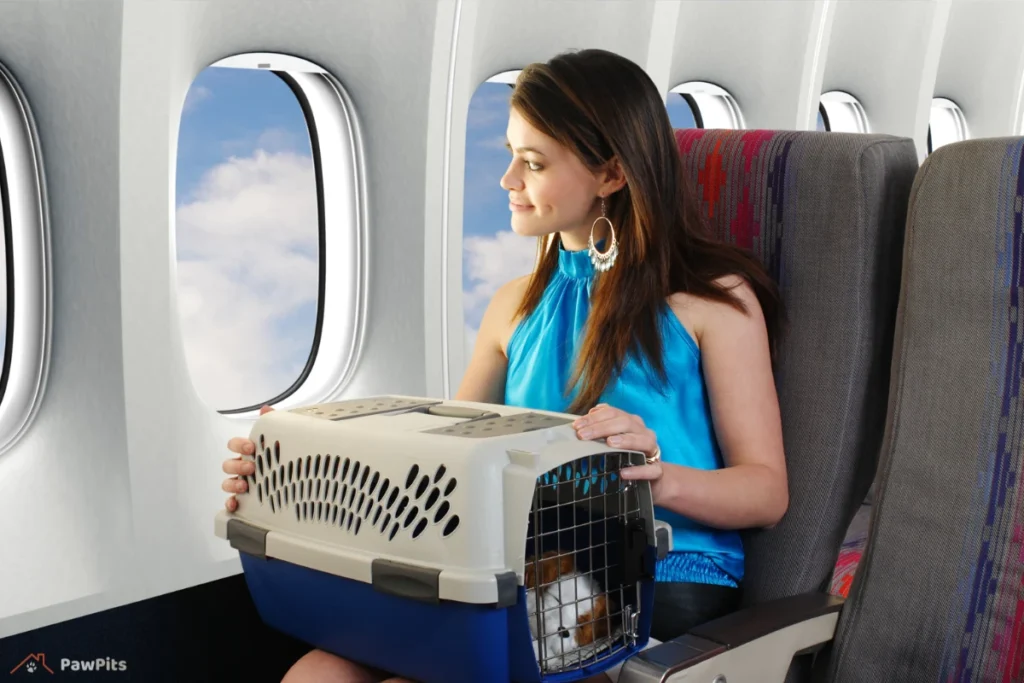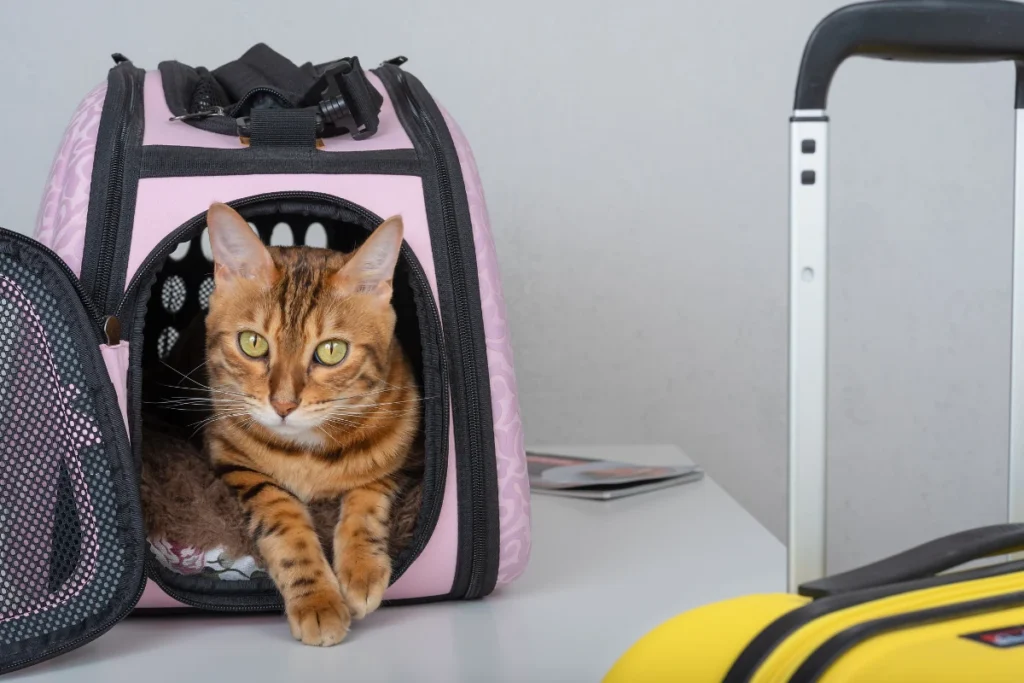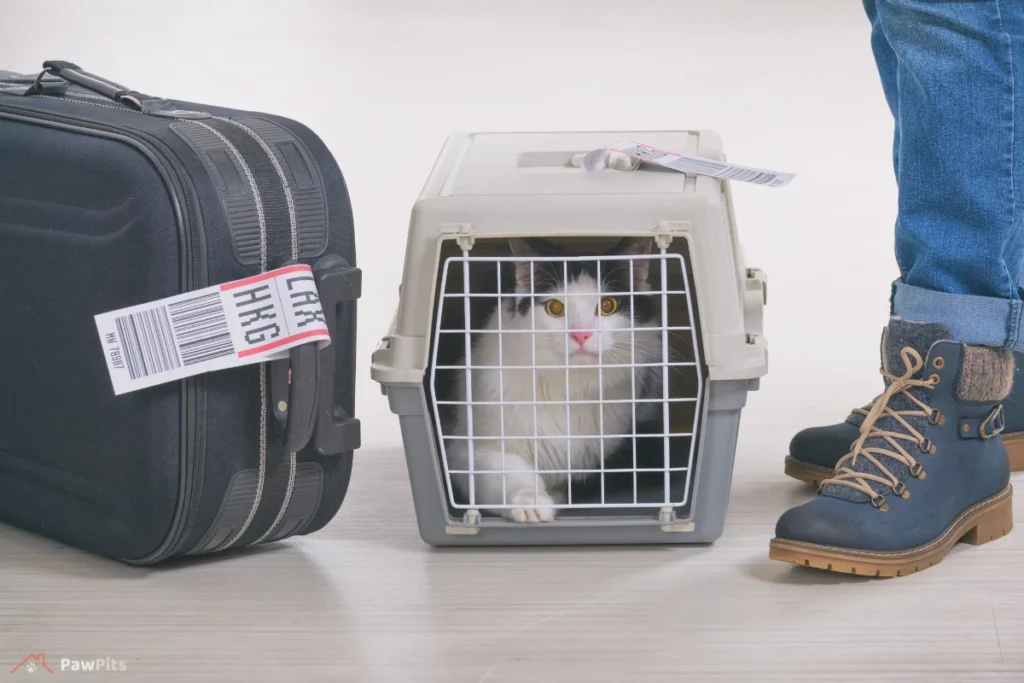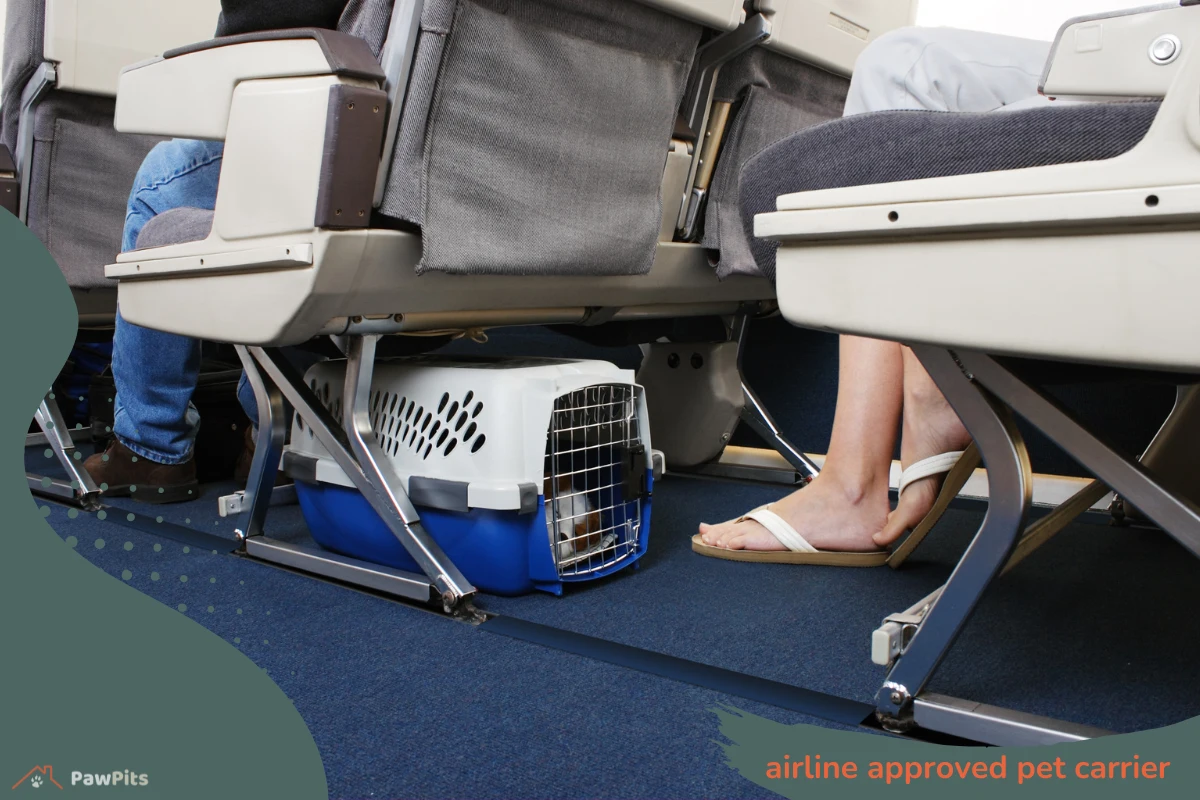Flying with your pet can feel overwhelming, but it’s often a necessity. Your pet isn’t just an animal; they’re family. And just like you wouldn’t settle for less when it comes to your comfort, your pet deserves the same. Choosing the right airline-approved pet carrier isn’t just about meeting airline regulations; it’s about creating a safe, stress-free travel experience for both of you.
In this guide, we’ll help you navigate the often-confusing world of airline pet carriers, ensuring you can pick the one that perfectly suits your needs. Whether you’re a frequent flyer or preparing for your pet’s first journey, you’ll find all the answers here.
What Is an Airline-Approved Pet Carrier and Why Does It Matter?

Why Airlines Have Strict Requirements
Airlines enforce strict guidelines to ensure the safety of all passengers human and animal alike. A compliant airline-approved pet carrier ensures your pet fits comfortably under the seat in front of you while meeting size and ventilation requirements.
Here’s why it matters:
- Safety: A well-designed carrier minimizes risks during turbulence.
- Comfort: Proper ventilation and space keep your pet relaxed.
- Compliance: Non-compliant carriers can result in denied boarding.
Common Airline Guidelines
While requirements vary by airline, most carriers agree on these basics:
- Maximum dimensions for under-seat storage (e.g., 18″ x 11″ x 11″).
- Breathable mesh on at least two sides.
- Leak-proof, durable bottom.
Key Features to Look for in a Pet Carrier for Airplane Travel

Finding the perfect airline pet carrier means balancing comfort, durability, and compliance. Here’s what to prioritize:
Comfort for Your Pet
Your pet’s well-being is non-negotiable. Look for:
- Padded Interiors: Cushioned bases for long flights.
- Ventilation: Mesh panels on multiple sides for airflow.
- Easy Access: Top-loading options for convenience.
Size and Dimensions: Meeting Airline Standards
Measure your pet’s length (nose to tail) and height (floor to shoulder) to select the right size. Compare with the size chart provided by airlines.
| Airline | Maximum Dimensions | Additional Notes |
|---|---|---|
| Delta | 18″ x 11″ x 11″ | Fits under most seats |
| United | 17.5″ x 12″ x 7.5″ | Call ahead for confirmation |
| American | 19″ x 13″ x 9″ | Soft-sided carriers preferred |
Portability and Ease of Use
If you’re constantly on the move, a lightweight carrier with padded straps is essential. Consider a pet carrier backpack for hands-free convenience.
Durability and Safety
Invest in carriers made from high-quality materials, such as reinforced stitching, sturdy zippers, and leak-proof bottoms. Safety locks and tether attachments are a must.
Types of Airline Pet Carriers: Which One Is Right for You?
Choosing the right type of carrier depends on your pet’s needs and your travel preferences.
Soft-Sided Carriers
- Pros: Lightweight, easy to store, fits under seats.
- Cons: Less durable for active pets.
Hard-Sided Carriers
- Pros: Maximum protection, easy to clean.
- Cons: Bulkier, less flexible for under-seat storage.
Pet Carrier Backpacks
- Pros: Ideal for active travelers, hands-free convenience.
- Cons: Limited size options.
Expandable Carriers
- Pros: Extra space for layovers or rest stops.
- Cons: Heavier and less portable.
How to Choose the Best Pet Carrier for Your Specific Needs
Considering Your Pet’s Needs
Your pet’s size, breed, and temperament are crucial. Nervous pets may prefer a carrier with minimal visibility, while adventurous pets thrive in mesh-sided options.
Your Travel Preferences
Think about the length of your trip. For long flights, prioritize carriers with extra padding and space. If you’re traveling internationally, check specific country import requirements for pets.
Airline Policies and Restrictions
Every airline has unique rules. Always verify:
- Maximum dimensions for pet carrier airline-approved options.
- Whether your carrier can count as your carry-on item.
- Additional fees for traveling with pets.
Preparing Your Pet for Air Travel
Step 1: Acclimate Your Pet to the Carrier
Start by introducing the carrier weeks before the trip. Let your pet explore it at their own pace, rewarding them with treats.
Step 2: Pack Essentials
Include the following items in your carry-on:
- Health certificates and vaccination records.
- Collapsible water bowl and a small bag of food.
- Comfort items like toys or a blanket.
Step 3: Manage Feeding and Hydration
Avoid feeding your pet a large meal right before flying. Instead, give a light snack a few hours before departure and ensure they’re hydrated.
Food Preparation for Cats and Dogs
1. Timing Is Everything
- Pre-flight Feeding:
- Feed your pet a light meal 4-6 hours before the flight to prevent motion sickness and ensure digestion is complete before traveling.
- Avoid heavy or rich foods, especially for dogs prone to stomach upset.
- In-flight Feeding:
- Most short flights (under 6 hours) don’t require feeding during the flight. However, on long-haul flights, plan to provide small, easily digestible snacks or kibble.
2. Choosing the Right Food
- Cats:
- Stick to their regular diet to avoid upsetting their stomach. Wet food can be packed in single-serve pouches but may require extra cleanup. Dry food is more travel-friendly.
- Dogs:
- Pack a portion of their regular kibble in a resealable bag. For larger dogs or long flights, consider freeze-dried dog food, which is lightweight and easy to rehydrate.
3. Portion Control and Packaging
- Pre-measure each meal into small, resealable bags or airtight containers to make feeding easier during layovers.
- Label each portion with the feeding time for better organization.
4. Hydration Tips
- Bring a collapsible water bowl for easy hydration during layovers or in-flight.
- Avoid overhydration before boarding, as it can make your pet uncomfortable during the flight.
- Offer ice cubes instead of water to prevent spills and control intake during the journey.
Checklist for Packing Pet Food and Feeding Supplies

Here’s a quick checklist to make sure you have everything you need:
- Pre-portioned food: Enough for the duration of your trip, plus a day’s extra supply in case of delays.
- Collapsible food and water bowls: Lightweight and easy to clean.
- Water bottle: Ensure fresh water is always available.
- Treats: Use sparingly to reward good behavior.
- Wet wipes: For cleaning up spills or accidents.
- Plastic bags: For disposing of uneaten food or trash.
Special Considerations for Cats
Cats tend to be more sensitive travelers. Here are additional tips for preparing their food:
- Wet vs. Dry Food: Cats often prefer wet food, but the smell can be overwhelming in confined spaces. Opt for dry food for ease of use, and offer wet food during layovers.
- Encourage Hydration: Cats can be finicky drinkers. Carry their favorite water source if possible, such as filtered water from home, as unfamiliar tastes may deter them from drinking.
- Litterbox Breaks: If your cat is accustomed to using a litter box, bring a portable litter tray and a small bag of litter for long layovers or post-flight use.
Special Considerations for Dogs
Dogs are generally more adaptable to travel, but their food and hydration needs can vary depending on their size and activity level:
- Chew Toys or Bones: Pack a safe chew toy to keep them occupied during layovers. Avoid rawhide or anything that might cause digestive issues.
- Avoid New Foods: Stick to their regular diet to prevent diarrhea or upset stomachs.
- Bathroom Breaks: Plan for potty breaks. For large airports, research pet relief areas where dogs can stretch and do their business.
General Tips for Food Preparation and Feeding
- Emergency Supplies: Pack extra food and water in case of delays.
- Temperature Control: For wet food or sensitive items, consider using a small insulated bag with ice packs.
- Snacks for Comfort: Familiar treats can reduce stress and serve as a reward for good behavior.
Additional Essentials for Travel
Food preparation is just one part of ensuring your pet has a comfortable journey. Here’s a list of other essentials to pack:
- Health Documents: Proof of vaccinations, health certificates, and any required travel permits.
- Comfort Items: A favorite toy, blanket, or piece of your clothing with your scent can provide comfort.
- Leash and Harness: Even if your pet will be in a carrier, you’ll need a leash for walking them during layovers.
- Identification Tags: Make sure your pet is wearing an ID tag with your contact information. Microchipping is also highly recommended.A Quick Word on Anxiety and Stress Management
Flying can be stressful for pets, so taking extra steps to ease their anxiety is essential:
- Familiarize Them with the Carrier: Weeks before your trip, let your pet spend time in their carrier at home. Make it a positive experience by placing treats and toys inside.
- Pheromone Sprays: Use calming sprays, such as Feliway for cats or Adaptil for dogs, inside the carrier to reduce stress.
- Consult Your Veterinarian: For pets prone to anxiety, ask your vet about natural calming supplements or mild sedatives.
Top Recommended Airline-Approved Pet Carriers in 2024
Here are some standout carriers based on comfort, durability, and user reviews:
| Carrier | Features | Price Range |
|---|---|---|
| Sleepypod Air | Adjustable size, crash-tested | $150-$200 |
| Sherpa Original Deluxe | Soft-sided, spring-wire frame | $50-$75 |
| PetAmi Backpack | Hands-free, multiple mesh panels | $40-$60 |
FAQs About Airline-Approved Pet Carriers
1. What is the difference between a standard and airline-approved pet carrier?
An airline pet carrier meets specific size, ventilation, and durability standards to ensure safety and compliance during air travel.
2. Can I use a pet carrier backpack for flights?
Yes, but ensure it is airline-approved and fits under the seat. Many backpacks cater to this need.
3. Are expandable carriers allowed?
Most airlines accept expandable carriers, provided they collapse to fit under the seat during takeoff and landing.
4. How do I know if my pet will fit comfortably?
Measure your pet’s length, height, and weight. Compare these dimensions with the carrier’s size chart.
5. How can I keep my pet calm during the flight?
Acclimate them to the carrier, pack familiar items, and consult your vet about anxiety solutions if needed.
Conclusion: Preparing Your Pet for Air Travel: A Step-by-Step Approach
When preparing your pet for air travel, the details matter. From carefully planning their meals to ensuring their emotional comfort, every step contributes to a smoother experience for both you and your furry companion. Whether you’re flying with a cat or a dog, your goal is to meet their specific needs while adhering to airline guidelines.
By focusing on practical solutions, such as packing their favorite food, managing hydration, and creating a calming environment, you can significantly reduce stress for your pet. Remember, each pet is unique. What works for one may not work for another, so it’s essential to adapt your preparations based on their size, personality, and preferences.
Ultimately, the journey is about more than just transportation—it’s about ensuring your pet feels secure, loved, and well-cared for every step of the way. With thoughtful preparation, you can transform what might feel like a daunting task into a seamless and positive experience. Every detail you attend to, no matter how small, will help ensure your pet arrives at your destination happy and ready to explore.


1 thought on “Pet Carrier: How to Choose the Best Airline-Approved Option”